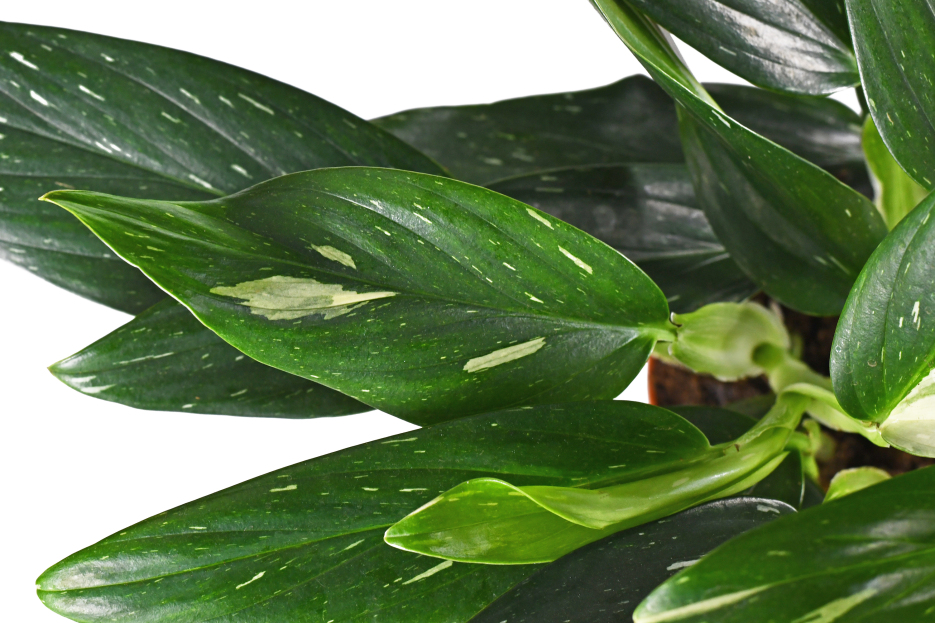
Monstera standleyana, sometimes called the Five Holes Plant or Philodendron Cobra, is a unique and eye-catching aroid known for its elongated, lance-shaped leaves adorned with creamy-white, yellow, or pale green variegation. Despite its name, it doesn’t have the iconic split leaves of a Monstera deliciosa, but its elegant vines and marbled foliage make it a gorgeous trailing or climbing plant for any collection.
Native to the tropical rainforests of Central America, Monstera standleyana is a fast-growing and relatively easy-to-care-for houseplant that adds texture and pattern to your indoor jungle.
Monstera standleyana thrives in bright, indirect light. The more variegation your plant has, the more light it needs to maintain those creamy streaks. A spot near a north or east-facing window is ideal, or filter stronger sunlight with sheer curtains.
Avoid extended exposure to direct sun, which can cause leaf burn, and avoid deep shade, which may reduce variegation and slow growth.
Allow the top 1 to 2 inches of soil to dry out before watering again. This plant enjoys consistent moisture but does not like to sit in wet soil. Overwatering can quickly lead to root rot, especially if the soil lacks proper drainage.
In warmer months, you may need to water every 7–10 days. In cooler seasons, scale back as the plant’s growth slows.
As a tropical plant, Monstera standleyana appreciates moderate to high humidity—ideally around 50–70%. If your indoor air is dry, especially in winter, boost humidity with a humidifier, pebble tray, or by grouping it with other plants.
It prefers warm temperatures between 65–85°F (18–29°C) and should be protected from cold drafts or temperatures below 55°F (13°C).
Use a well-draining, airy soil mix that holds some moisture but doesn’t stay soggy. A mix of potting soil with perlite, orchid bark, and a bit of coco coir works well to mimic its natural epiphytic environment.
Repot every 1–2 years or when roots start outgrowing the pot. Choose a container with drainage holes to help prevent waterlogging.
Feed Monstera standleyana every 4–6 weeks during the growing season (spring through early fall) using a balanced liquid houseplant fertilizer diluted to half strength. Fertilizing helps support healthy foliage and encourages strong variegation.
Hold off on fertilizing during winter when the plant isn’t actively growing.
In the wild, Monstera standleyana climbs trees and surfaces, so it will appreciate support like a moss pole, trellis, or bamboo stake indoors. This encourages larger leaves and more robust growth.
Without support, it can also trail beautifully from a hanging basket or shelf.
Minimal pruning is needed, but you can:
Use clean scissors or shears to avoid introducing pathogens, and wipe down the leaves regularly to keep them dust-free and vibrant.
Monstera standleyana is easy to propagate through stem cuttings. Cut just below a node (where a leaf meets the stem) and place the cutting in water or moist soil until roots develop. High humidity speeds up propagation success.
Spring and early summer are the best times to propagate.
Like many aroids, Monstera standleyana is toxic to pets if ingested due to calcium oxalate crystals. Keep out of reach of cats, dogs, and young children to avoid any issues.